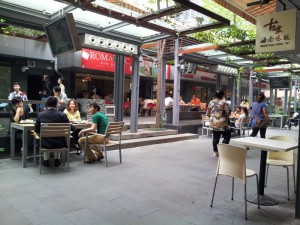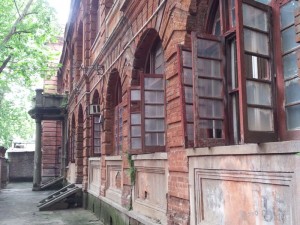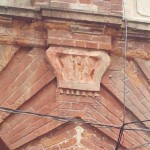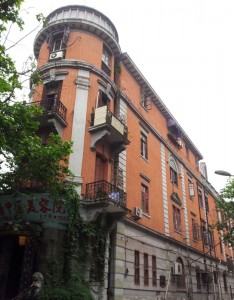I had not been back to Wuhan since 3 years ago when I wrote the post “Upriver, Hankou’s foreign concessions“. A recent business trip, gave me the opportunity to spend a few hours in that area again. Always a nice way to relax between meetings.

The first major change I noticed was WuhanTiandi. Just like in Shanghai XinTianDi (developped by the same company), a few old houses have been kept and totally renewed. Not much of the old remains, but the design has made it a nice area with many shops and restaurant. Just like in Shanghai a few years ago, Wuhan TianDi is an island of new and fashionable in an area of faded glory, but the builders are just waiting and soon the whole place will be a celebration of brand new apartment towers and shopping malls. Fortunately, Wuhan TianDi was built mostly outside the central historic areas, this makes it a great stop after strolling through the small streets of the former concessions.

Going up through the former Japanese and German concessions, I ran into this old apartment building from 1910. The style are archways are similar to buildings of the same style in Shanghai, like on Feng Yan lu. Wooden doors with glass are quite similar, as well as the later closure of the archways with windows to increase the usable space.This was probably residence for middle class, not quite a villa but a modern and comfortable housing building.

Looking at it in details, one can find a British Crown engraved on the wall. Although it has clearly been hammered down it is still visible and reminded me of the one I saw on a building in Salay in Burma (Click here to see the picture). This building was probably built for housing civil servants working for the British administration like the police.
I continued walking along the Bund, passing by the former German consulate that is now the town hall of Hankou and by the former Banque de L’Indochine and the former American consulate, which architecture is very similar to the long gone American consulate on the Shanghai Bund. Further up is located the only Secession style building I ever saw in China (see former post about Hangkou), that is currently under renovation. Hopefully this will turn out for the better, though I would not hold my breath on it.

Finally, I dived in the small streets behing Marco Polo hotel, looking for what is probably my prefered building in Hankou. One of my Shanghai friend referred to it as the “building looking like the Normandy building in Shanghai”. They surely have a similar look, both being red brick triangular buildings, but the Hankou one is much older and much smaller as well. The building unique shape can be well seen on the map in the former Russian concession. I heard that the Wuhan government is about to move inhabitants away and renovate it. Hopefully the renovation will not destroy it’s unique cachet.
At the end of the day, although Hankou former concession are way smaller than the Shanghai ones, they are still very nice, worth a few hours strolling along the tree lined streets.
It may interest you to know that Xu Chi, protegé of the famous 1930s poet Dai Wangshu (who was married to Mu Shiying’s sister Lijuan), and featured in my new book Shanghai Scarlet, ended up in Wuhan. below is the quotation from the end of Shanghai Scarlet where I let the reader know what happened to the people whose names are featured:
Xu Chi, Dai’s protégé and best man at his wedding to Mu Lijuan, converted to Marxism in the late 1930s. He lived to visit the United States in the 1980s, expressing great enthusiasm for Chicago’s skyscrapers, which reminded him of the wonderful Shanghai of the past. Xu commited suicide in 1996, by jumping out of a window of his house in Wuhan, reputedly out of ennui with old age. He was in his early eighties.
Best wishes,
Margaret Blair